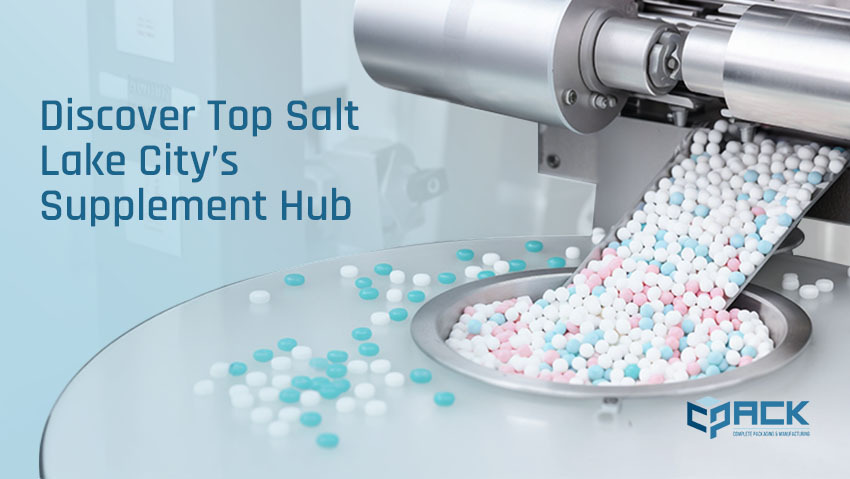The protein supplement market has grown exponentially as more consumers prioritize health, fitness, and sustainability. Brands entering this competitive space face a critical decision: should they focus on plant-based protein or whey protein? Each option has its unique benefits, target audience, and challenges.
This blog explores the details of plant and whey protein, offering insights to help you decide which aligns with your brand’s vision and goals.
Understanding Whey Protein

Whey protein is one of the most popular and scientifically backed protein supplements. Derived from milk during the cheese-making process, whey is a complete protein source, containing all nine essential amino acids the body cannot produce on its own.
How Whey Protein is Made
Whey protein is derived from milk through a multi-step process. First, milk is separated into curds and whey during the cheese-making process. The liquid whey, which contains valuable proteins, is then collected and undergoes a filtration process to remove fats, carbohydrates, and other impurities.
After purification, the whey is dried into a fine powder, preserving its protein content. This powder is the base for whey protein supplements, which are available in several forms, each with varying protein concentrations and processing levels.
These include:
- Whey concentrate which retains some fat and lactose
- Whey isolate which is further refined to remove most fat and lactose
- Whey hydrolysate which undergoes additional processing to break down the proteins into smaller peptides for faster absorption.
The result is a versatile, high-quality protein supplement that is used by athletes, fitness enthusiasts, and those looking to support overall health.
Types of Whey Protein
- Whey Protein Concentrate (WPC)
- Contains 70-80% protein.
- Retains more fats and carbohydrates, giving it a richer taste.
- Whey Protein Isolate (WPI)
- Contains 90% or more protein.
- Lower in fats and carbs, making it ideal for calorie-conscious consumers.
- Whey Protein Hydrolysate (WPH)
- Pre-digested for faster absorption.
- Often used in clinical nutrition or for athletes with high-performance needs.
Benefits of Whey Protein
- Complete Protein Source
Whey protein is considered a complete protein because it contains all nine essential amino acids that the body cannot produce on its own. These amino acids must be obtained through diet or supplementation, as they are crucial for various bodily functions. Among these amino acids, some play a pivotal role in muscle repair and growth
- High in Leucine
Leucine, one of the essential amino acids found in whey protein, is especially important for muscle protein synthesis, the process by which the body builds new muscle tissue. Research has shown that leucine is a powerful activator of the mTOR pathway, which triggers muscle growth. This makes whey protein particularly beneficial post-workout, as it helps stimulate muscle recovery and growth during the critical period after exercise when muscles are repairing
- Fast Absorption
One of the key advantages of whey protein is its rapid digestion and absorption. Whey protein is broken down quickly in the digestive system, allowing amino acids to enter the bloodstream and reach muscle tissues in a matter of hours. This rapid absorption makes whey protein an excellent choice for post-workout nutrition, as muscles are primed to absorb nutrients and begin the recovery process right after exercise.
- Scientific Backing
Whey protein’s effectiveness is backed by decades of scientific research, which supports its role in improving strength, endurance, and overall fitness. Studies have consistently demonstrated that whey protein supplementation can enhance muscle mass, improve recovery times, and increase overall athletic performance. Research has shown that consuming whey protein post-exercise helps optimize recovery, stimulate muscle protein synthesis, and reduce the muscle damage associated with intense workouts.
- Versatility
Whey protein is incredibly versatile, which adds to its appeal for those looking to incorporate it into their daily routine. Beyond the classic protein shake, whey protein can be easily mixed into a wide range of foods and beverages. It can be added to smoothies, protein bars, or even baked goods like muffins or pancakes, offering a convenient way to increase protein intake throughout the day.
Challenges with Whey Protein
- Lactose Content: Not suitable for lactose-intolerant individuals unless hydrolyzed or isolate forms are used.
- Perception Issues: Some consumers perceive whey as less eco-friendly and natural.
- Allergens: Whey is a dairy product, making it unsuitable for those with milk allergies.
Understanding Plant Protein

Plant-based protein has surged in popularity, driven by the rise of veganism, environmental awareness, and the need for allergen-friendly options. Sourced from plants like peas, rice, soy, hemp, and quinoa, plant protein caters to a diverse audience.
Common Sources of Plant Protein
- Pea Protein: High in branched-chain amino acids (BCAAs), great for muscle recovery.
- Rice Protein: Complements pea protein, rich in methionine.
- Soy Protein: A complete protein, similar to whey, with added benefits for heart health.
- Hemp Protein: Packed with omega-3 fatty acids and fiber.
- Quinoa Protein: A nutrient-dense seed containing all essential amino acids.
How Plant Protein is Made
Plant protein is made by first harvesting the plants, cleaning them, and grinding them into a fine flour. The protein is then extracted from this flour using either water or chemical processes to isolate the protein content from the rest of the plant material. After the protein is extracted, it is concentrated or further refined into an isolate, depending on the desired protein purity.
Finally, the protein concentrate or isolate is dried into a powder form, which can be used as a protein supplement or incorporated into various food products. This process ensures that plant-based protein retains its nutritional value and is suitable for those seeking non-animal sources of protein.
Benefits of Plant Protein
- Sustainability
One of the primary benefits of plant protein is its sustainability. Plant-based proteins generally have a significantly lower carbon footprint and use less water compared to animal-based proteins. Growing plants requires fewer resources such as land, water, and energy—than raising animals for food. This makes plant proteins an environmentally friendly choice for those looking to reduce their ecological impact.
- Allergen-Friendly
Plant protein is naturally allergen-friendly, making it a great option for individuals with dietary restrictions, especially those who suffer from dairy allergies or lactose intolerance. Unlike animal-based protein sources like whey or casein, which are derived from milk and can cause adverse reactions in sensitive individuals, plant proteins come from sources such as peas, hemp, brown rice, and soy..
- Rich in Nutrients
In addition to being a good source of protein, plant-based protein often contains other valuable nutrients that contribute to overall health. Many plant proteins are rich in fiber, which promotes digestive health, helps regulate blood sugar levels, and supports a healthy weight. Furthermore, plant proteins are often packed with vitamins, minerals, and antioxidants that support immune function and reduce inflammation
- Adaptable
Another advantage of plant protein is its adaptability. While many plant-based proteins are not complete on their own, meaning they may lack one or more essential amino acids, they can be easily blended with other plant-based sources to create a complete amino acid profile. For instance, combining rice protein with pea protein or hemp protein with quinoa can provide all the essential amino acids required for optimal muscle repair and growth
- Market Appeal
Plant protein has significant market appeal, particularly among consumers who prioritize health, ethics, and sustainability. As more people adopt plant-based diets for health reasons, environmental concerns, or ethical beliefs, the demand for plant-based protein sources has grown. Many consumers are drawn to plant protein for its perceived health benefits, including lower cholesterol, improved heart health, and a reduced risk of chronic diseases like diabetes.
Challenges with Plant Protein
- Incomplete Amino Acid Profiles: Single-source plant proteins may lack one or more essential amino acids.
- Taste and Texture: Can have an earthy taste and grittier mouthfeel compared to whey.
- Lower Bioavailability: Plant proteins are not as efficiently absorbed as whey proteins.
Key Comparisons: Plant Protein vs. Whey Protein
| Factor | Whey Protein | Plant Protein |
| Protein Quality | Complete, with all essential amino acids. | Depends on the source; blends can be complete. |
| Absorption Rate | Rapid, ideal for post-workout recovery. | Slower but sustained release of nutrients. |
| Digestibility | Easy to digest unless lactose-intolerant. | High digestibility, especially with isolates. |
| Environmental Impact | Higher carbon footprint. | More sustainable and eco-friendly. |
| Taste | Smooth, neutral flavor. | Earthy or nutty, depends on formulation. |
Which is Right for Your Brand?
1. Define Your Target Audience
- Whey Protein: Appeals to fitness enthusiasts, bodybuilders, and those focused on performance.
- Plant Protein: Attracts vegans, vegetarians, and environmentally conscious consumers.
2. Consider Market Trends
The rise of plant-based diets and environmental concerns has fueled demand for plant protein, but whey protein continues to dominate the sports nutrition segment.
3. Brand Values
If your brand prioritizes sustainability and inclusivity, plant protein aligns with these values. On the other hand, if performance and proven effectiveness are at the core of your brand, whey protein is a strong choice.
4. Product Versatility
- Whey protein is well-suited for high-protein snacks, recovery drinks, and meal replacements.
- Plant protein works in superfood blends, vegan shakes, and natural health products.
5. Price Point
Plant protein is often more expensive to produce due to sourcing and processing. However, consumers are willing to pay a premium for ethical and sustainable products.
The Future: Hybrid Protein Products
An emerging trend is the combination of plant and whey proteins to offer the best of both worlds. Hybrid formulations can deliver complete amino acid profiles, appeal to diverse consumer groups, and balance sustainability with performance.
Conclusion
Both plant protein and whey protein have their strengths, and the choice depends on your brand’s mission, target audience, and market positioning. Whey protein’s superior bioavailability and muscle-building benefits make it a fitness staple, while plant protein’s sustainability and allergen-free properties resonate with health-conscious, eco-friendly consumers.
By understanding the unique characteristics of each, your brand can make an informed decision, ensuring its product offerings meet consumer demands and stand out in a competitive market. Whether you choose plant, whey, or a hybrid approach, success lies in delivering high-quality, authentic, and innovative products.





